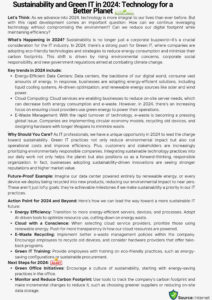
Overview:
In 2024, blockchain technology has expanded far beyond its initial use in cryptocurrencies like Bitcoin. Once viewed as a niche technology for financial applications, blockchain is now revolutionizing various industries by introducing decentralization, transparency, and enhanced security to business processes. While cryptocurrencies remain a prominent use case, enterprises across sectors such as supply chain management, healthcare, finance, real estate, and government are increasingly adopting blockchain for more practical, wide-ranging applications.
A key feature of blockchain is its ability to create a distributed ledger system, which means data is not stored in a single location but across multiple nodes. This enhances security, resilience, and tamper-proofing because altering the data at one point would require changes across all nodes, which is nearly impossible. In this decentralized environment, trust is established not through intermediaries but through cryptographic proofs and consensus mechanisms, making processes more transparent and efficient.
Current Applications:
In 2024, businesses and governments are integrating blockchain into the following areas:
- Supply Chain Transparency: Blockchain is transforming supply chain operations by providing end-to-end visibility of goods. Companies like Walmart and IBM are using blockchain to track products from origin to destination, verifying authenticity, ensuring compliance, and preventing counterfeiting. This has been especially useful in sectors like food safety and pharmaceuticals.
- Smart Contracts: These are self-executing contracts where the terms are encoded in the blockchain itself. Ethereum, a leader in smart contract platforms, has allowed industries such as real estate, insurance, and logistics to automate and secure agreements, reducing the need for intermediaries and lowering operational costs.
- Healthcare Records: Blockchain is being used to manage patient records, giving individuals control over their health data while ensuring privacy and security. Blockchain-based systems enable better data sharing across healthcare providers while protecting sensitive information.
Technological Evolution:
Blockchain is evolving in ways that make it more scalable and adaptable for widespread enterprise use:
- Layer 2 Solutions: These solutions, such as Lightning Network and Polygon, enable faster and more scalable blockchain transactions by building off-chain layers that interact with the main blockchain. This addresses the major issue of transaction speed and cost, making blockchain viable for industries with high transaction volumes.
- Interoperability: 2024 has seen a surge in technologies that allow different blockchains to communicate with one another. Polkadot and Cosmos are two prominent platforms working on blockchain interoperability, which enables seamless asset transfers and data sharing across various blockchain networks, expanding their use cases.
- Energy Efficiency: Early blockchain systems like Bitcoin have been criticized for their energy-intensive Proof-of-Work (PoW) consensus mechanism. Newer systems, including Proof-of-Stake (PoS) and hybrid mechanisms, are significantly more energy-efficient, aligning blockchain technology with global sustainability goals.
Future Implications:
- Financial Services:
- Decentralized Finance (DeFi) is a rapidly growing sector that leverages blockchain to create financial products and services without intermediaries like banks. In 2024, DeFi platforms are offering everything from lending and borrowing to insurance and derivatives. As the financial sector shifts towards more decentralized models, blockchain could disrupt traditional banking by making financial services more accessible, transparent, and affordable.
- Tokenization of Assets: Blockchain is also enabling the tokenization of real-world assets like real estate, stocks, and art. These tokens represent fractional ownership of an asset and can be traded on blockchain platforms, unlocking liquidity and allowing for more inclusive investment opportunities.
- Government and Public Sector:
- Governments are increasingly exploring blockchain for digital identity systems and voting platforms. In 2024, countries like Estonia are using blockchain-based e-residency programs to secure citizen identities and provide seamless government services. Blockchain-based voting systems are also being tested to ensure transparent and tamper-proof elections, which could revolutionize how democracies function by eliminating voter fraud and increasing participation.
- Decentralized Autonomous Organizations (DAOs):
- DAOs represent a new form of governance that is entirely transparent and based on blockchain. These organizations function without a central authority, with decisions made collectively by token holders who vote through smart contracts. DAOs are being adopted in various sectors, including venture capital, content creation, and non-profits, where they allow for more democratic and distributed decision-making processes.
- Cross-Border Transactions:
- Blockchain is streamlining cross-border payments, an area traditionally riddled with inefficiencies, high costs, and delays. In 2024, blockchain-based payment systems like Ripple and Stellar are enabling faster, cheaper, and more transparent international money transfers. This has major implications for industries like remittances, where workers can send money home in a fraction of the time and cost compared to traditional banking systems.
Challenges and Opportunities:
While blockchain offers significant potential, there are also challenges that businesses and governments need to address:
- Regulatory Uncertainty: As blockchain technology disrupts traditional systems, governments around the world are grappling with how to regulate this emerging space. Issues around data privacy, security, and cross-border governance are still being debated, and future blockchain adoption will depend on clear, consistent regulation.
- Scalability: Despite improvements, blockchain scalability remains a concern for widespread adoption. As transaction volumes grow, blockchain networks must evolve to handle billions of transactions per second without compromising security or decentralization.
- Integration with Existing Systems: For blockchain to reach its full potential, it must integrate smoothly with existing technologies and workflows. This will require investments in infrastructure, training, and blockchain-compatible systems to avoid operational disruptions.
Conclusion:
By 2024 and beyond, blockchain is no longer a speculative technology but a core component of next-generation enterprise systems. Its ability to decentralize operations, enhance transparency, and improve security is transforming industries globally. As businesses, governments, and institutions continue to adopt blockchain, the technology will play a critical role in shaping the future of how we transact, govern, and secure data in the digital age.






